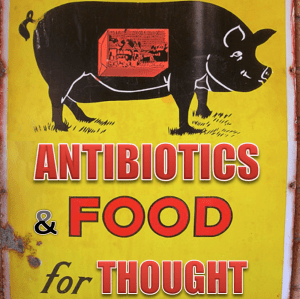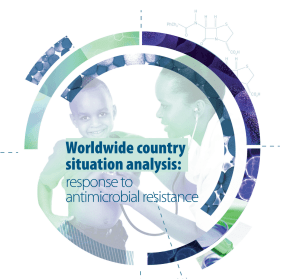As we hear about rises in iGAS, the issue of antibiotic allergy – and specifically penicillin allergy – labelling comes to the fore. A good review here outlines some of the issues in this complex space, and makes some helpful suggestions about how this could be improved.
Continue readingantimicrobial resistance
Three key headlines from ESPAUR 2022
Great to see another fantastic annual ESPAUR report. It really is marvellous to have such a clear picture of HCAI and AMR related trends. As ever, there is some good news and some not so good news. Here three key headlines:
- Trends in bloodstream infection, antimicrobial resistance, and antimicrobial prescribing have changed during the pandemic.
- Tackling deprivation is tackling HCAI and AMR.
- We need to keep an eye on CPE
Money makes the AMR bugs go round in Europe? A reflection from ECCMID 2017
If you pick an AMR bacterium of your choice, go to EARS-Net and plot prevalence across Europe, in most cases you’ll see a rough ‘north-south’ divide, with northern European countries doing better than southern European countries in terms of AMR rates (e.g. see below for antibiotic-resistant K. pneumoniae). What is driving this difference in AMR rates? A session at this year’s ECCMID asked just that question, hypothesising that weather / climate, economics, patient mix, or culture explain the difference. It was a fascinating session, so I thought I’d share some highlights!
State of the World’s antibiotics
The State of the World’s antibiotcs, 2015, was just released by the Center for Diseases Dynamics, Economics & Policy (http://www.cddep.org). For all those interested in antimicrobial resistance this report is a must read.
To cite from the publication, this State of the World’s Antibiotics report records the status of this important global resource and provides critical policy analysis on three issues:
- global patterns and trends in antibiotic resistance and antibiotic use in human beings and animals
- the existing antibiotic supply and the research and development pipeline
- interventions that have been shown to help rationalize antibiotic use and are practicable in all countries.
While being wonderful, the reports include a figure from a 2013 Lancet ID publication, a colleague (@ChristinaGrauls) alerted me to. According to figure 2-2: Carbapenem retail sales in selected countries, 2005–2010, the retail sales and thus probable consumption of carbapenems per 1,000 population is identical for the Netherlands and the USA. Somehow, I find that hard to believe.
Antibiotics and the Netherlands
Antimicrobial resistance, control of antibiotic use and infection control are some of the things the Dutch presumably do well. Some of the Dutch infection control policies, such as “Search & Destroy” helped to stop the introduction of MRSA for a long time. I addition, the prevalence of other MDRO is low in comparison to many other countries. Still, more needed to be done, and consequently, the Dutch were (one of) the first that made antimicrobial stewardship teams (A-teams) compulsory for every hospital and presently plan introduction in other healthcare settings. Last but not least, the fight against antimicrobial resistance will be an important topic, while the Dutch hold the Presidency of the European Union in the first half of 2016.
Thus, what else could we ask for? A few weeks ago, I had at least one request: basic antibiotics.
Due to fading reimbursement policies and the constant pressure to sale drugs for decreasingly lower prices, the production for and/or distribution of several drugs within the Netherlands is no longer possible. Latest victim: i.v. penicillin, which is no longer available in my country (high-resource setting). While it seems difficult to argue for small spectrum antibiotics in the absence of one of the important ones, there is some good news: I no longer have to argue whether to use penicillin or a 3rd generation cephalosporin for certain indications. Ceph it is!
Maple syrup to fight antimicrobial resistance
I always knew it. Pancakes with maple syrup are so good, they must be “healthy”.
Canadian researchers took a different look at North American maple tree syrup. They published that the phenolic compounds contained in the syrup potentiates antimicrobial susceptibility by increasing outer-membrane permeability and effectively inhibit efflux pump activity, in addition to reducing biofilm formation.
After all the research into the antimicrobial activity of foods & spices (e.g. garlic), I am happy to see a less smelly product being promoted. In addition, this may explain why antimicrobial resistance is low in the Netherlands, a country with a proud tradition of pancake restaurants everywhere.
Seriously, antimicrobial activities have been reported from many extracts of “food & spices”, but none really made it into clinical practice. So far the mushrooms seem to be winning. Go Penicillium.
Photo: wikipedia
WHO Antimicrobial Resistance Analysis
Over a 2-year period, from 2013 to 2014, WHO undertook an initial “country situation analysis” in order to determine the extent to which effective practices and structures to address antimicrobial resistance have been put in place and where gaps remain.
A survey was conducted in countries in all six WHO regions and focused on the building blocks that are considered prerequisites to combat antimicrobial resistance: a comprehensive national plan, laboratory capacity to undertake surveillance for resistant microorganisms, access to safe, effective antimicrobial medicines, control of the misuse of these medicines, awareness and understanding among the general public and effective infection prevention and control programmes.
Link to document: http://www.who.int/drugresistance/documents/situationanalysis/en/
Pigs & Antibiotics – Food for Thought
 ARIC just published an interesting article that tried to estimate the antibiotic consumption in Chinese pig breading (http://www.aricjournal.com/content/4/1/17).
ARIC just published an interesting article that tried to estimate the antibiotic consumption in Chinese pig breading (http://www.aricjournal.com/content/4/1/17).
Since the article is based on a US model, I believe that it needed a word of caution/explanation. Have a look at the editorial: http://www.aricjournal.com/content/4/1/16
Eight solutions from the G8 summit to curb antibiotic resistance
As effective therapy using antibiotics becomes increasingly difficult due to resistance, the emphasis must move from cure to prevention of bacterial infection. There is an urgent need to take internationally coordinated action to curb the further development of antibiotic resistance. The steps required are complex and will require engagement on a national and international level. So, it’s encouraging to see antibiotic resistance on the G8 agenda. Here’s eight solutions that have been discussed by G8 summit science ministers:
- Get antibiotic resistance on the agenda. The fact that the issue is being discussed at all demonstrates that the problem is being recognized. The recent rhetoric from Dame Sally Davies (“antibiotic resistance as big a risk as terrorism”) and the US CDC (“deadly, untreatable superbugs”) will help.
- Reduce overuse (abuse) of antibiotics in medical, veterinary and other applications. Antibiotics simply should not be used to fatten up animals and stop barnacles attaching to ship hulls!
- Restrict the availability of antibiotics where they are currently available over the counter. According to Dame Sally Davies, 83% of Russian families use antibiotics inappropriately at home.
- Stimulate the discovery of new antibiotics, and streamline the testing and approvals required to bring a new antibiotic to market. Drugs are expensive to discover and then bring to market. Pharmaceutical companies are not currently focused on developing new antibiotics and need to be incentivized.
- Improve and share surveillance efforts. National and international surveillance systems should be established for emerging resistant strains.
- Highlight the financial burden of antibiotic resistance ($21bn-$34bn a year in the US, £10bn a year in the UK).
- Stop selling antibiotics at the cost of Smarties. Otherwise they will be consumed like Smarties. Generic antibiotics can be very cheap indeed; increasing the price of generic antibiotics will provide a financial barrier to inappropriate over-the-counter use.
- Develop rapid diagnostics to reduce the universal or empiric use of inappropriate / ineffective agents. This does not sit well with the proposed universal use of antibiotics.
There’s no simple solution to the problem of increasing antibiotic resistance. The problem is long-standing, multi-factorial and global. However, international collaboration can make real progress is curbing the increase in antibiotic resistance rates and perhaps even begin to reverse the trend.





